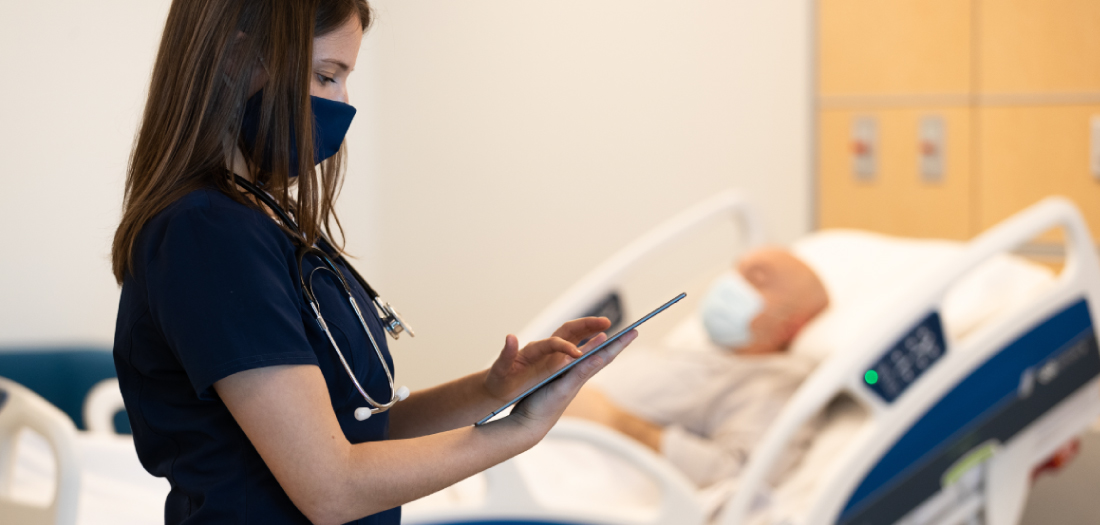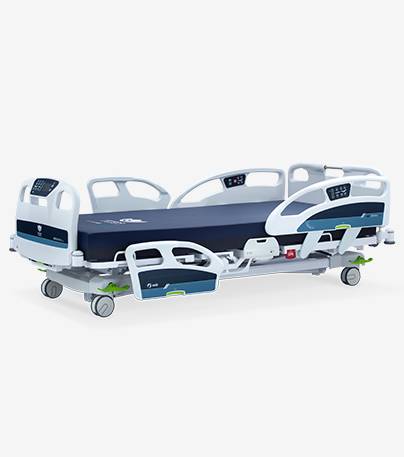
Contributing to healthcare worker engagement and safety through better hospital equipment

By Élisabeth Champagne
Directrice marketing et ventes internationales
Published on May 25, 2023
In a post-pandemic world, nurse burnout rates continue to be unprecedentedly high. According to the American Nurses Association, almost two-thirds of nurses (62%) have experienced burnout. As equally alarming, a survey conducted by the National Council of State Boards of Nursing has found that over 600,000 registered nurses with more than 10 years of experience plan to leave the workforce by 2027, due to stress and unmanageable job constraints. Based on some reports, the Great Resignation has incited 30% of nurses in the healthcare industry to quit.
Employee engagement: A key strategy to mitigate stress levels among nurses
Hospital leaders around the world are looking for innovative ways to remedy job burnout for caregiver personnel, including nurses and beneficiary attendants. Stressful work environments are one of the top reasons nurses experience burnout, as per a study entitled Prevalence of and Factors Associated With Nurse Burnout in the US. To curb the stress, the Harvard Business Review recommends that hospital and nursing management teams explore ways to develop employee engagement strategies designed specifically for healthcare workers.
But could there be other solutions as well? A Cornerstone report revealed that 13% of nursing respondents felt like they were a “means to an end” and that their facilities’ limited focus on patient outcomes “had the most negative impact on engagement and increased stress levels”. Furthermore, 19.5% cited that the unpredictability and changes of all kinds also cause engagement to plummet.
What if better hospital equipment, such as hospital beds, could also contribute to easing some of the pressure on nursing staff and beneficiary attendants?

Hospital beds: An essential component of the healthcare delivery system that needs to be rethought
Well-designed hospital beds not only improve patient comfort, safety and treatments; they also affect the efficiency and effectiveness of nurses’ care, which, in turn, can cause ripple effects on how positively or negatively they view their work. Let’s take a look at some advanced hospital bed features and how they support nurses and beneficiary attendants in their day-to-day work.
Single-platform hospital beds
Standardized hospital beds throughout a medical facility can give nursing staff instant familiarity with any bed on any floor. Thanks to their simplicity and design with nurses’ tasks in mind, single-platform beds require shorter learning curves and decrease the probability of errors.
By eliminating the confusion nurses experience with different hospital bed technologies, they become more efficient—and focus more of their time on patient care rather than trying to figure out the inner machinations of a hospital bed.
Smart hospital beds
With nurses and beneficiary attendants grappling with more patients per staff member, it can be overwhelming to always check in on each room at the scheduled time. Smart hospital beds, that feature Wi-Fi-connected technologies such as Umano ConnectTM, enable patient data to be collected in real-time, which allows nursing teams and beneficiary attendants to remotely monitor patients, reducing the number of trips made to each room.
Furthermore, Umano ConnectTM centralizes data, which facilitates communication between staff members. Rather than relying on paper-based reporting that can be cumbersome to access and manage, healthcare providers can observe patient data through easy-to-understand dashboards, simplifying coordination between teams to provide safe and comfortable patient-care environments.

Compliance with safe patient handling program
Another way smart hospital beds stave off pressure for nurses and beneficiary attendants is how they play an integral part in guaranteeing compliance with safe patent handling programs. By being able to remotely keep a watch on in-bed patient activity, healthcare staff can more easily identify ways to better mobilize patients without risk of injury to patients or themselves.
If patients are at risk of falling, smart hospital beds can alert nurses if a patient is in an unsafe position or trying to get up. Nursing staff and beneficiary attendants, therefore, don’t constantly have to be on edge to provide safe care and ensure fall prevention protocols are met.
Smart beds with oneNEST support surfaces also make it easier for nurses and beneficiary attendants to help prevent and treat pressure injuries. This offers patients a better recovery experience. Healthcare staff perceive their hard work as contributing to positive patient outcomes.
Better-designed hospital beds for employee safety
Umano Medical’s hospital beds have also been designed with healthcare workers’ safety in mind. The Pilot DriveTM is a motorized wheel system that makes it easier to move beds around, requiring less physical effort on the part of nurses and beneficiary attendants and faster maneuverability.
All of Umano Medical’s ook snow hospital beds are low-height, which respect prevention protocols. These lower, ergonomically developed beds alleviate the strain healthcare personnel experience when helping patients get in and out of bed, thereby reducing potential on-the-job injuries and absences.
Elevate healthcare professionals' work environments and experiences with better hospital equipment
Nurses who feel supported by their leaders, and the equipment they use, are more likely to remain engaged and committed to their roles. When nursing staff feel they can provide high-quality care to their patients, it can foster a sense of pride and accomplishment in their work.
Hospital administrators play a crucial role in selecting the type of hospital beds used in their facilities. They must consider not only the needs of patients but also the impact of the beds on the nursing staff. By investing in ergonomically designed, technologically advanced beds, administrators can create a better work environment for nursing, leading to higher job satisfaction and employee retention rates.
About the author

Élisabeth Champagne
More articles form Élisabeth Champagne

Headquarters
230 Nilus-Leclerc Blvd.
L'Islet, QC G0R 2C0
CANADA
1 844 409-4030
Lévis Office
470 3e Avenue
Lévis, QC G6W 5M6
CANADA
US Location
11845 Adie Rd.
Maryland Heights, MO 63043
UNITED STATES
Sherbrooke Office
670, Joseph-Louis-Mathieu Rd.
Sherbrooke, J1R 0X3
CANADA
Careers
Our talented and passionate team is determined to revolutionize the medical industry. Be part of the journey: join the Umano Experience.
See available jobsConnect with us
Copyright © 2025 Umano Medical inc







